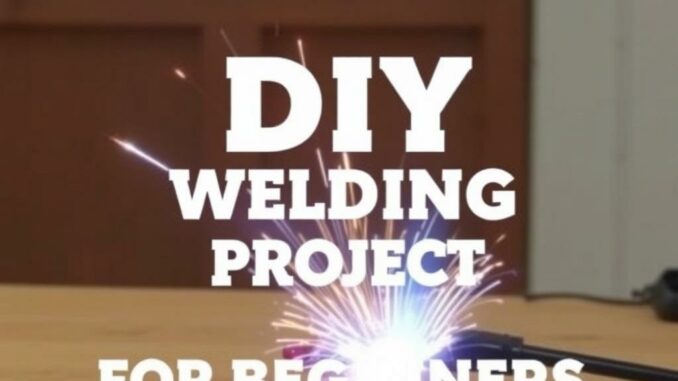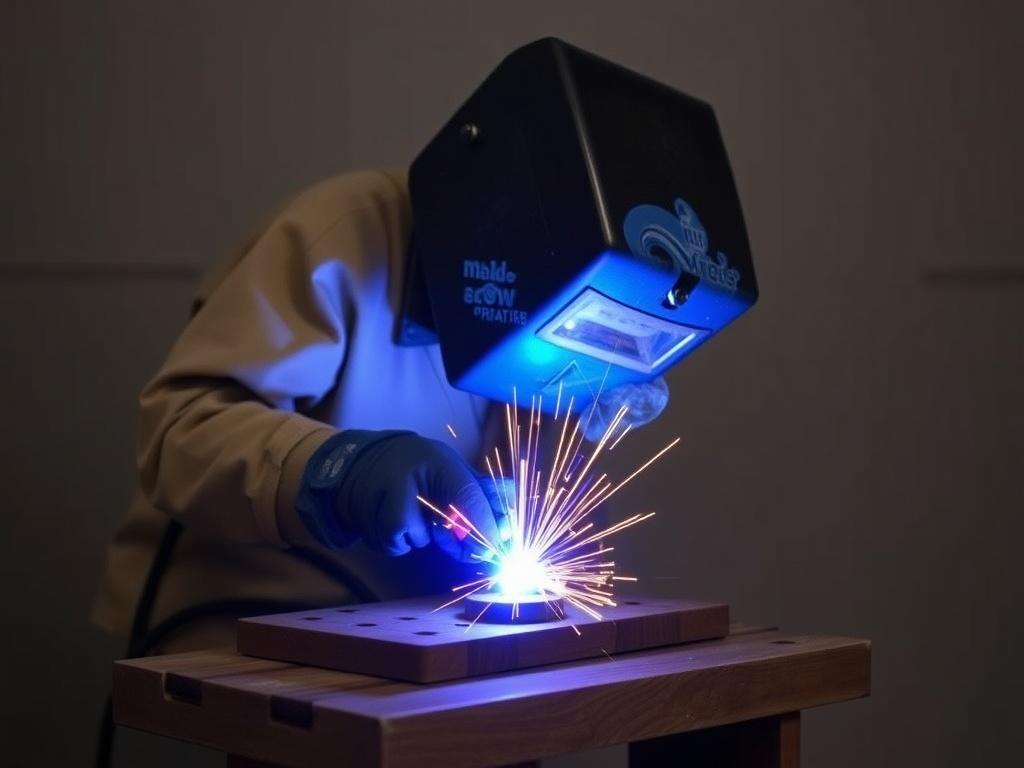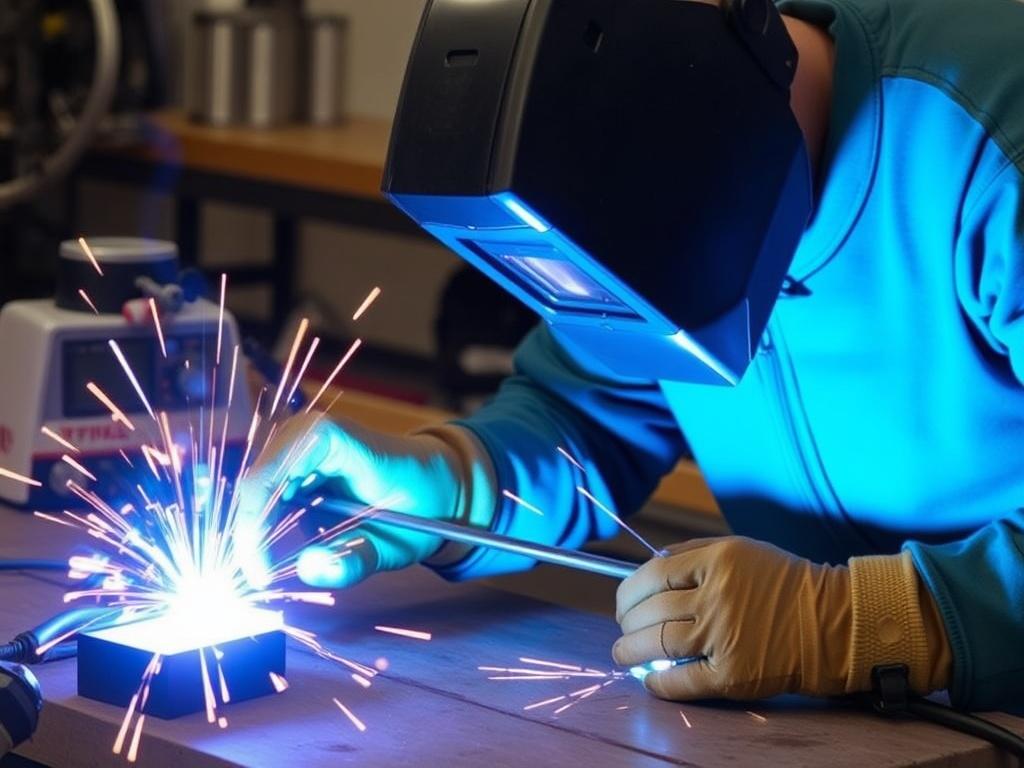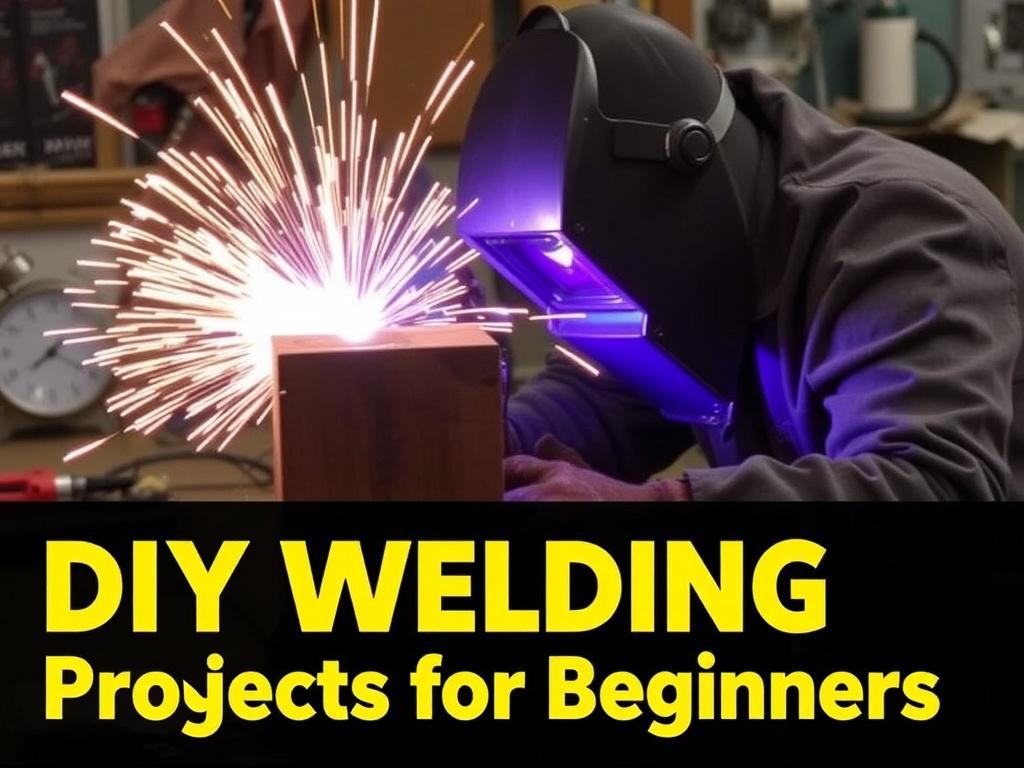
Welding might seem like a complex and intimidating skill at first glance, but with the right guidance and some hands-on practice, anyone can learn to weld successfully. Whether you’re looking to create sturdy home repairs, craft exciting metal art, or build practical tools, DIY welding projects for beginners are an excellent way to get started. In this article, we’ll explore everything you need to know about welding as a beginner, from understanding different welding types, safety tips, choosing the right tools, to step-by-step projects that anyone can follow.
By the end of this comprehensive guide, you’ll feel confident in picking up that welding machine and creating your own metal masterpieces. So, let’s jump right in and ignite your passion for welding!
What is Welding? A Simple Explanation for Beginners
Before diving into DIY welding projects, it’s important to understand what welding actually is. Welding is a fabrication process that involves joining two or more pieces of metal together by melting the parts at the joining point and adding a filler material. The filler material cools and solidifies, creating a strong bond between the metals. This process is widely used in construction, manufacturing, automotive repairs, and even artistic projects.
For beginners, knowing the basic types of welding helps immensely when selecting a project or the right tools. The most common types include:
- MIG Welding (Metal Inert Gas): Ideal for beginners because it’s relatively easy and fast.
- TIG Welding (Tungsten Inert Gas): Offers precision, used mostly in more detailed projects.
- Stick Welding (Shielded Metal Arc Welding): Good for outdoor use and thicker materials.
Each type has pros and cons, but for anyone just starting out, MIG welding is often recommended due to its simplicity.
Essential Welding Tools and Equipment for Beginners
Before you jump into your first DIY welding project, having the right equipment is crucial. While professional welders use some heavy-duty tools, beginners can start with more affordable, easy-to-use gear. Here’s a handy checklist of the essential welding tools and equipment every beginner should consider:
| Tool/Equipment | Purpose | Notes |
|---|---|---|
| Welding Machine (MIG Welder recommended) | Main device to perform welding | Look for beginner-friendly models with adjustable settings |
| Protective Gear (Helmet, Gloves, Jacket) | Essential for safety against sparks and UV rays | Invest in an auto-darkening helmet for convenience |
| Welding Rods or Wire | Filler material used during the weld | Match the type to your welding machine and project metal |
| Clamps and Metal Holders | Keep your materials stable during welding | Crucial for accuracy and safety |
| Angle Grinder | Used for surface preparation and finishing | Helps smooth weld joints and clean metals |
| Wire Brush and Chipping Hammer | Cleaning slag and debris from welds | Maintaining clean joints improves weld quality |
Starting your journey with the right tools not only improves your results but also keeps you safe while experimenting on different projects.
Safety First: Key Welding Safety Tips for Beginners
Welding is a rewarding hobby, but it does involve risks if proper safety precautions aren’t followed. Here are some essential safety tips that every beginner welder must keep in mind:
- Always wear protective gear: A welding helmet with a proper shade rating protects your eyes from intense light and UV radiation. Wear heat-resistant gloves and a heavy-duty jacket to guard skin against sparks and burns.
- Work in a ventilated area: Welding produces fumes and gases that can be harmful. Always ensure your workspace has good airflow or use an exhaust fan designed for welding fumes.
- Keep a fire extinguisher nearby: Sparks can ignite flammable materials, so be prepared to act in case of emergencies.
- Clear your workspace of clutter: Remove any flammable liquids, papers, or textiles.
- Check and maintain your equipment: Faulty wiring or damaged cables can cause accidents, so inspect your welding machine before each use.
By following these fundamental safety guidelines, you’ll create a secure environment to enjoy your welding projects without worry.
Easy DIY Welding Projects for Beginners to Build Confidence
One of the best ways to become comfortable with welding is by working on simple projects that gradually build your skill level. Here are a few beginner-friendly projects that make excellent starting points and deliver rewarding results:
1. Metal Coat Rack
A metal coat rack is functional and a great way to practice welding straight seams and attaching hooks. Using square or round metal tubing, beginner welders can create a stylish rack that holds coats, hats, or bags.
- Materials: Steel tubing, hooks, welding wire
- Skills Learned: Basic MIG welding, measuring, and cutting metal
- Cut the steel tubing into base, vertical supports, and arms for hooks.
- Weld the parts at the correct angles to form the frame.
- Attach hooks at the desired spots using spot welds.
- Grind down welds for smoothness and paint for a finished look.
2. Simple Metal Picture Frame
Creating your own metal picture frame is a small project that helps practice precise cuts and clean welds. It’s also a great gift idea!
- Materials: Flat metal bars, welding wire, clamps
- Skills Learned: Measuring for accuracy, right-angle welding
- Cut four pieces of metal bar to the desired frame size.
- Use clamps or a corner jig to hold pieces square.
- Weld the corners carefully, checking alignment.
- Clean welds and optionally add hooks on the back for hanging.
3. Metal Towel Rack
If you want a practical addition to your bathroom or kitchen, a metal towel rack can be a perfect beginner project. It’s less complicated but still lets you learn useful welding techniques.
- Materials: Steel pipe or round bar, wall fasteners
- Skills Learned: Pipe welding, surface preparation, mounting
- Cut steel pipes to the desired lengths.
- Weld the supports and crossbars into a stable structure.
- Attach appropriate mounts so it can be fixed on the wall.
Step-By-Step Guide: How to Start Your First DIY Welding Project

Feeling inspired by the projects above? Let’s walk through the step-by-step process that will make your first welding experience smooth and enjoyable.
Step 1: Gather Your Tools and Materials
Refer back to the essential tools table and the project list to collect everything you need. Having all gear and materials ready will help you focus when starting and prevent interruptions.
Step 2: Prepare Your Workspace
Ensure your area is clean, well-lit, ventilated, and free of hazards. Set up your welding machine and test its settings. Arrange clamps and workpieces for easy access.
Step 3: Clean and Cut Your Metals
Use an angle grinder or metal brushes to clear rust, paint, or oils from metals. Measure twice and cut once to keep everything precise.
Step 4: Wear Your Safety Gear
Put on your welding helmet, gloves, jacket, and safety boots. Double-check nothing is loose or dangling.
Step 5: Tack Weld to Position Components
Place your metal pieces where they’ll be joined and perform tack welds — small, temporary welds that hold parts together. This step ensures pieces remain aligned during full welding.
Step 6: Perform Full Welds
Slowly and steadily, trace your welds along the joints. Remember, even welds strengthen your project and look better. Take breaks if you need to rest your hands and eyes.
Step 7: Clean Up and Inspect
Use a chipping hammer and wire brush to remove slag. Inspect welds for gaps or weak spots, sanding rough edges, and preparing your project for paint or finish.
Common Challenges Beginners Face and How to Overcome Them

It’s normal to encounter hurdles as a beginner welder. Here are some common problems and quick fixes to keep your DIY welding projects enjoyable:
| Common Issue | Cause | Solution |
|---|---|---|
| Porosity (holes in the weld) | Contaminants on metal or excessive moisture | Clean metal thoroughly and keep electrode dry |
| Warping or metal distortion | Overheating or uneven heat distribution | Use tack welds, weld smaller sections, and cool slowly |
| Spatter buildup | Incorrect machine settings or technique | Adjust voltage/amperage; use anti-spatter spray |
| Poor penetration | Low current or improper electrode angle | Increase heat setting and check electrode angle |
Practice, patience, and learning from mistakes are key. With time, your welds will become stronger and neater.
Tips for Selecting Your Next DIY Welding Project

Once you’ve tried the beginner projects, how do you choose what to tackle next? Here are some tips to keep you motivated and growing your skills:
- Pick projects with progressively bigger challenges: For example, add curves, variable thickness metals, or decorative elements.
- Choose something useful: Builds your confidence and gives you a sense of achievement.
- Consider your workspace and equipment capacity: Don’t bite off more than you can chew initially.
- Learn from online resources: Tutorials and videos often offer innovative DIY welding projects for beginners with clear instructions.
Keeping a journal or photo record of each project also helps track improvement over time.
Maintaining and Caring for Your Welding Equipment
To keep your welding tools in great condition for future DIY welding projects, proper maintenance is a must. Here are some easy steps:
- Clean your machine and cables after each use to prevent dust and debris buildup.
- Inspect cords regularly for wear and tear.
- Store welding rods or wire in dry conditions to avoid corrosion.
- Check and replace worn consumables like nozzles and tips.
- Keep your helmet lens clean for clear vision and protection.
Good maintenance not only extends the lifespan of your equipment but also ensures safety and quality welding every time.
How to Join the DIY Welding Community and Learn More
Welding is a skill best learned among peers and through continuous practice. Today, there are many resources and communities dedicated to DIY welding projects for beginners where you can get advice, inspiration, and support.
- Online Forums: Welding web forums are filled with experienced welders happy to answer questions.
- YouTube Channels: Numerous channels offer project walkthroughs, tips, and reviews.
- Local Makerspaces: Many cities have makerspaces equipped with welding gear where beginners can take classes and meet like-minded creators.
- Social Media Groups: Join welding groups on Facebook, Reddit, or Instagram. Sharing your work and seeing others’ can be motivating.
Engaging daily with the community keeps your enthusiasm high and speeds up your learning curve.
Conclusion: Welding is Within Your Reach
DIY welding projects for beginners offer an exciting gateway into a world of creativity, practical skill, and craftsmanship. With the proper safety measures, tools on hand, and the right mindset, you can confidently start tackling projects that transform your space and boost your self-reliance.
Don’t be discouraged by initial mistakes; every master welder began exactly where you are. Take it one weld at a time, practice often, and watch as metal bends to your will—turning your ideas into reality.
Are you ready to ignite your welding journey? Grab your gear, pick a project, and spark that first weld today!
